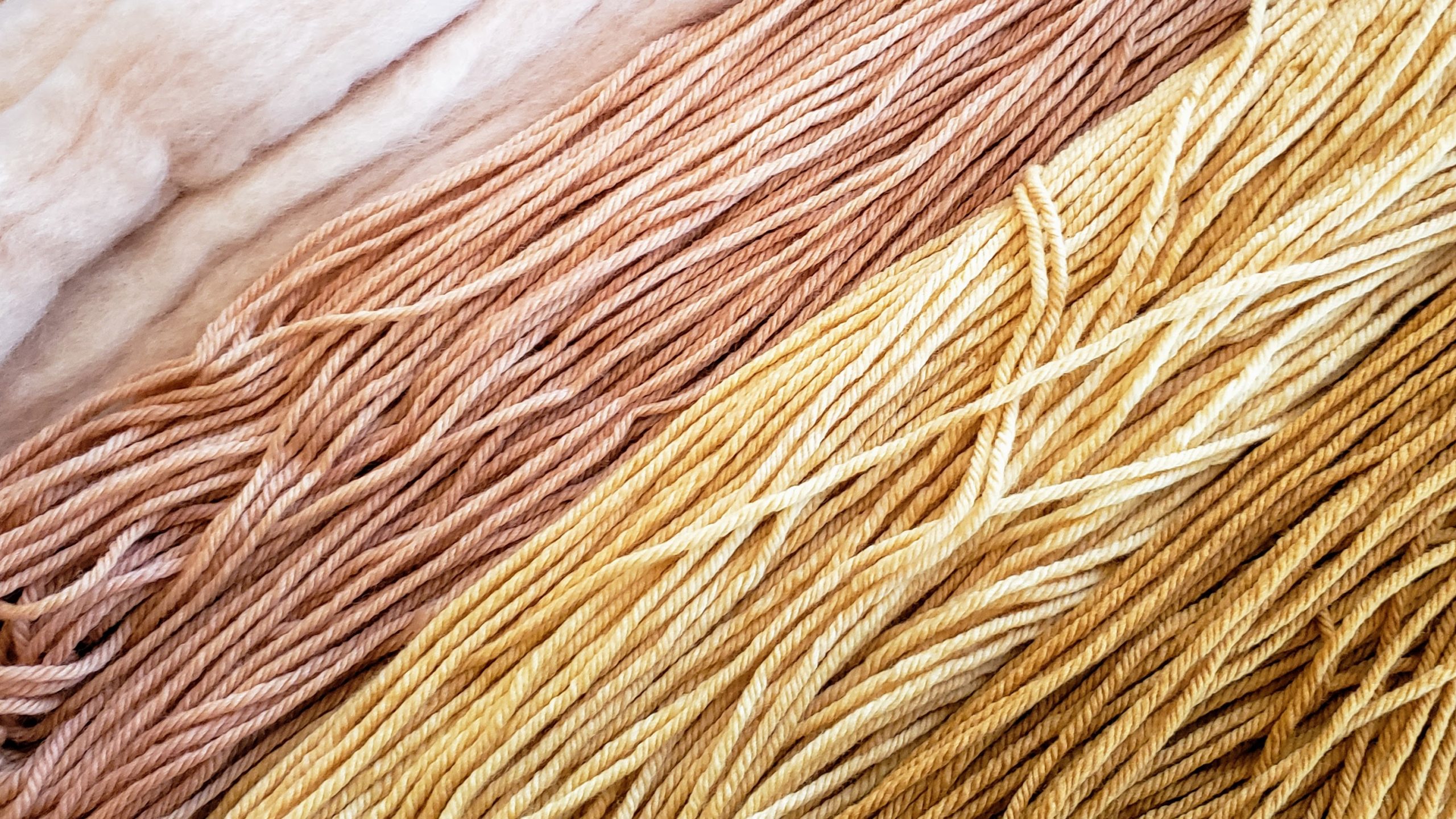
Last weekend, when my kid was sick after missing a few days of school, and we were all stuck in the house despite the first sunny days in ages, it was the perfect time to finally try doing some natural dyeing in my kitchen.
I’d purchased the yarn and rovings blanks years ago, thinking the kid would join me in dyeing them up with Kool-Aid, but my kid is not crafty and had no interest in doing such a thing, so the package sat in my closet. When I learned a while back that avocados produce a pinkish dye, I knew the yarn was destined for some kitchen experimenting.
And oh my goodness, I had no idea how dead simple and fun it would be.
Because, to put it simply, to naturally dye yarn or fabric or roving with avocados here’s what you do: simmer the avocado pits and/or peels in water, add natural-fibre yarn or roving or fabric, let it sit, rinse.

Here, I’ll put it into a list so it seems more official:
Step 1: Prepare the Avocado Dye Bath
Using a stainless steel pot that’s large enough to hold all the stuff you’re going to dye, bring water almost to a boil (but not to a boil). Put clean avocado pits (alone they’ll produce a pinker colour, from what I understand) and/or peels (alone they’ll produce a peachy colour) into the water and simmer for a long time. The water will almost immediately begin to take on colour, yippee!
I let the dye pot simmer for about three hours before I put the yarn in, and in my research learned that folks wait anywhere from under an hour to letting the dye steep overnight. This kind of variability is part of what I love about doing things like this – pick a time frame, see how it goes, adjust for the next time based on the results.
Step 2: Put in the Yarn or Roving or Fabric
Unlike for many plant-based natural dyes, you don’t need to use a mordant to set avocado dye. I’ve read that this is because the pits contain tannins that do the job, but I haven’t read this definitively so if you have a good source for info on this, please hit reply and let me know.
The yarn I used is superwash wool, so I wasn’t concerned about it felting. The roving, however, which I added to the pot a while after I put the yarn in, was straight-up wool, and after I gently put it into the dye bath I realized I had no idea how to get it out without felting it.
So I asked on Twitter! And my friend Jill, who dyes stunning yarns, replied:
Just don't touch it until it's cool. Rinse it gently & spin it in a lingerie bag if you have on & hang it to dry. It's really heat & agitation together that felt, one or the other separately won't really do it.
— Jill Draper (@JillMakesStuff) February 9, 2020
Ok! Armed with this advice, I removed the pot from heat after a few hours and left it to cool.
Step 3: Gently Rinse
I took the yarn out before the water had fully cooled, and let the yarn cool on its own. Once it was cool, I rinsed it in cool water until the water ran clear, which happened almost immediately. Then I gently rolled the yarn in a towel as I would a knitted or crocheted item I’d handwashed, and hung it to dry.
I left the roving in the pot till it had all cooled to room temperature, then I very gently removed the roving and gave it a gentle rinse in cool water. As Jill recommended, I put it in a lingerie bag and put it on a spin cycle, which worked like magic. (I’ll do that with the yarn next time, too.) By morning, the roving was ready to start spinning.
Dyeing Yarn with Black Tea
The brown yarns in the photo above were dyed in black tea. Unlike with avocado dyeing, you do need to use a mordant when dyeing with black tea. Here’s the gist of what I did:
While I soaked the yarn in the sink with about 1 part white vinegar to 4 parts water, I brewed about 15 black tea bags in half a large stock pot full of water boiling water. I let the pot simmer and steep for about half an hour, then I removed the tea bags, drained the sink and squeezed the liquid out of the yarn. I put the first hank of yarn in the tea dye and it soaked it up immediately (resulting in the darker brown colour in the far right of the photo). I let it sit in the dye bath for around half an hour, removed it to cool, and put the second hank in (the lighter brown one in the photo). There was dramatically less dye left in the pot at that point, which was super cool to see. Then I rinsed and dried the yarn as I did with the avocado-dyed yarn.
The vinegar here serves as a mordent, to set the dye.
Have you experimented with dyeing yarns or fabric with kitchen scraps or other edibles? I’d love to hear about it!

Leave a Reply to Kim Werker Cancel reply